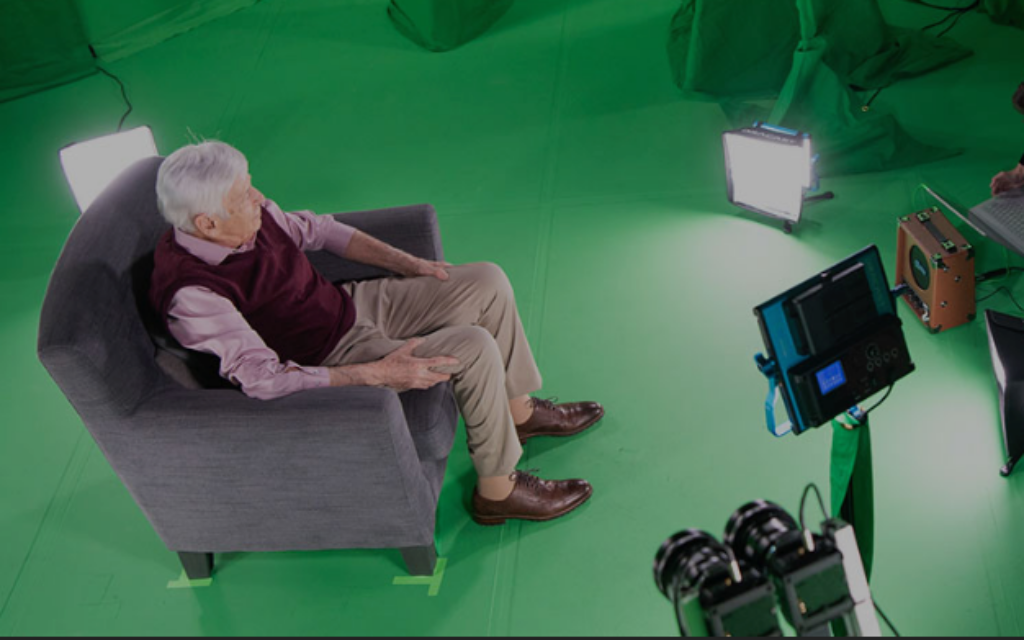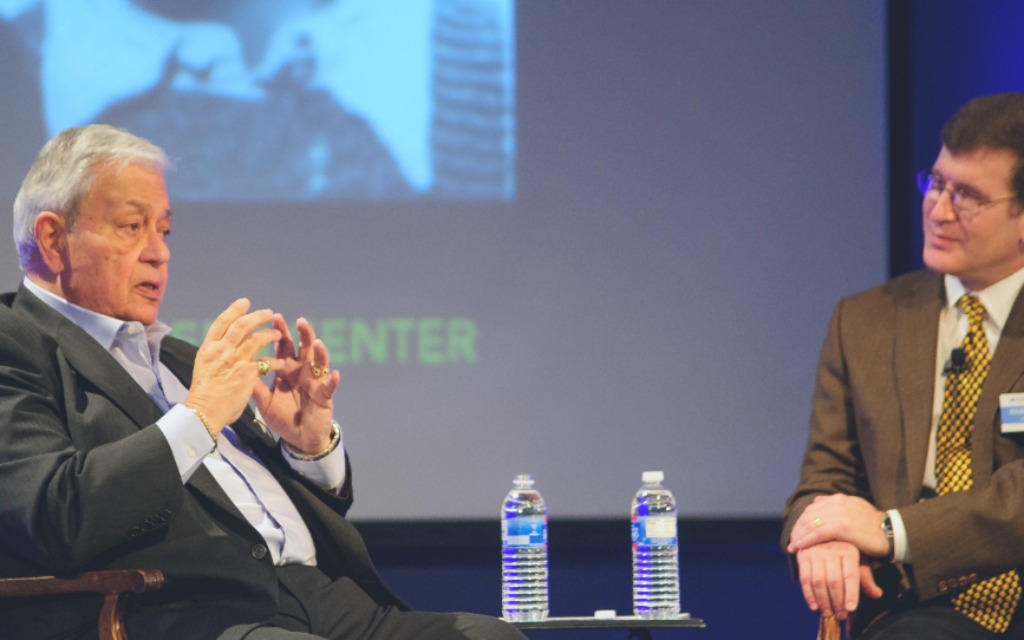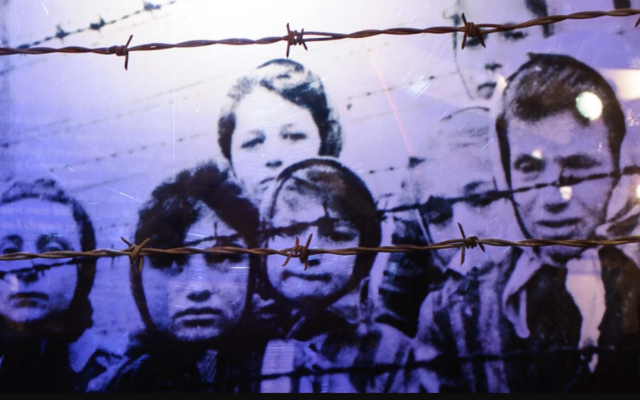As Holocaust Survivors Dwindle, Technology Steps In
Increasingly, museums like The Breman Jewish Heritage Museum in Atlanta and others around the country are adapting advanced technology to keep the memory of the Holocaust alive.
Although The Claims Conference estimated last year that there are about 50,000 survivors of the Holocaust, the number of those who are still able to speak about their experiences is quickly dwindling. By 2030, that number is expected to dwindle to only about 15,000.
In the most recent Holocaust Remembrance Day service at Greenwood Cemetery, the audience was reminded of the 330 survivors throughout the Southeast who receive social services and financial support, including grocery gift cards and other basic supplies.
Most of the survivors today are in their 80s and 90s and many are in poor health. Others suffer from dementia or other forms of memory loss. The youngest survivors may have been too young to have meaningful memories of the tragedy their family lived through.

Losing the first-person testimony of Holocaust has, arguably, had its impact on how the trade of those years is perceived by young people. A survey of Dutch students in The Netherlands, the setting for the Diary of Anne Frank, showed that 23 percent of the young people there believe the Holocaust is a myth, or that the number of Jews killed has been greatly exaggerated.
Increasingly, museums and educational institutions like The Breman Museum are turning to technology to augment the stories of Holocaust survival. Rabbi Joe Prass, the Breman’s director of Holocaust education, can now present his Holocaust education programs to students using the digitized collection of the Breman and its 3-D mapping technology.
“What we have done is the result of how we adapted our programs created in an opportunity coming out of the COVID era. We have put down our entire gallery on a 3-D mapping program. So, last week, when we encountered logistical problems bringing 400 students to the gallery, we present an interactive presentation virtually. I can see the students on Zoom, they can see me, and I flip over to this 3-D mapping of our Holocaust galleries, and they can have a docent led tour of the entire gallery.”
Sharing through technology can be as simple as talking to TikTok, which is how Holocaust survivor Tova Friedman, with the help of her grandson, brought her experiences to more than a half-million people.

In the new Holocaust Museum planned to open in 2025 along Boston’s Freedom Trail, a digitized hologram of 93-year-old Holocaust survivor David Schaecter will give visitors the opportunity to interact with a lifelike image of Schaecter. They can ask questions directly of Schaecter and receive an answer from him, as if he were speaking directly to them in the room.
The technology is an outgrowth of the University of Southern California’s Shoah Foundation’s Dimensions in Testimony which presents the pre-recorded testimonies as if they were standing before the audience. The technology integrates advanced language processing, specialized display technologies and new ways of recording video images to present the words and images of those who directly experienced the Holocaust.
Funding for the program is part of a commitment that Steven Spielberg, the producer and director of “Schindler’s List,” made soon after the worldwide success of that film. All of the considerable profits that he made from the film, which grossed over $322 million worldwide, help set up the video library at USC.
A similar program is in production based on the documentary “Big Sonia” about Sonia Warshowski, which had its Southeastern premiere at the Atlanta Jewish Film Festival. It was this year’s presentation by the Public Broadcasting Service during Holocaust Remembrance commemoration and will remain on the PBS website for viewing free of charge until 2025.
Despite all the advances in technology, The Breman Museum has had extraordinary success with its “Bearing Witness” programs, which brings the stories of Holocaust survivors to Sunday afternoon audiences that often fill the auditorium for the free programs. It is something that Rabbi Prass is deeply committed to.
“We intend to present the stories of how the Holocaust was actually experienced just as long as we possibly can. Holocaust education is one of our major pillars. As a museum, we certainly do other things, but Holocaust education has always been and remains a major pillar of what we do.”
- News
- Local
- Bob Bahr
- The Claims Conference
- holocaust
- Holocaust Remembrance Day
- Greenwood Cemetery
- Diary of Anne Frank
- The Breman Museum
- 3-D mapping technology
- TikTok
- Tova Friedman
- Boston’s Freedom Trail
- David Schaecter
- University of Southern California’s Shoah Foundation’s Dimensions in Testimony
- Schindler's List
- Big Sonia
- Sonia Warshowski
- Atlanta Jewish Film Festival
- Bearing Witness
- Rabbi Joe Prass




comments